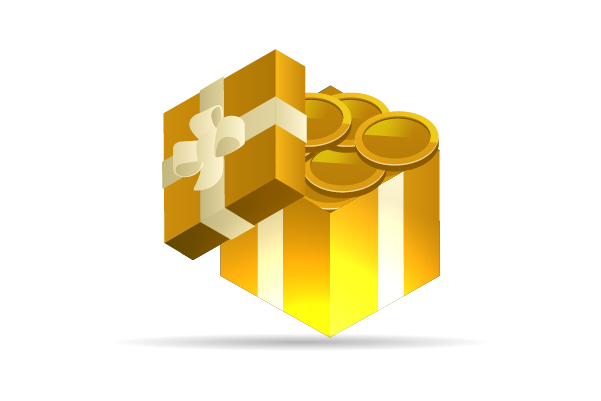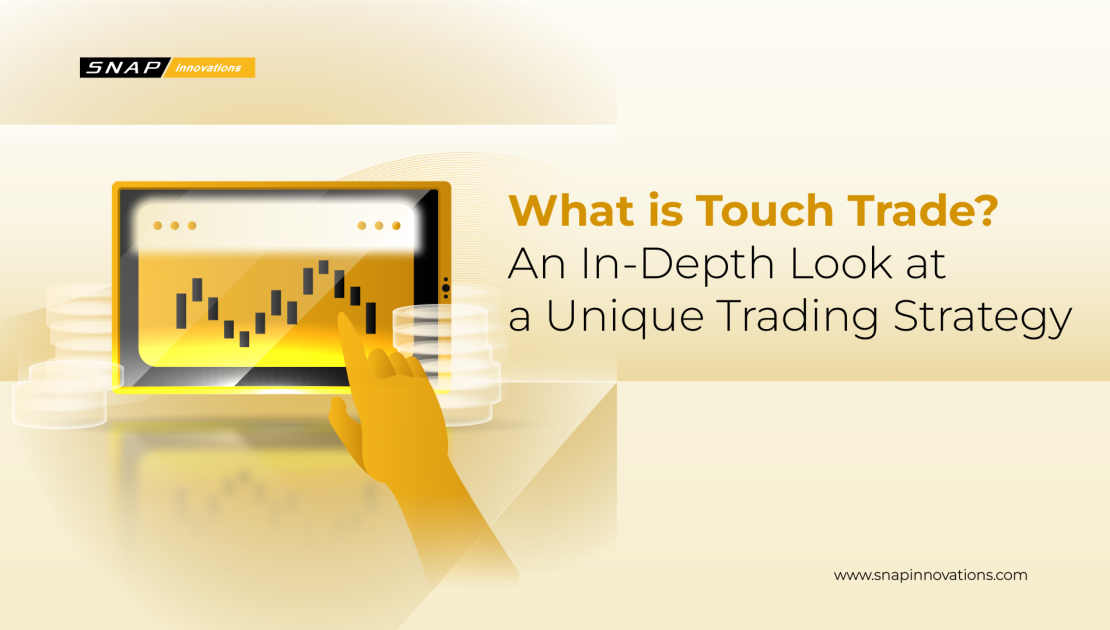In the dynamic world of financial trading, various strategies exist to help traders maximize their profits and manage risks. One of the less common yet intriguing strategies is the concept of ‘Touch Trade.’ This term is not as widely known as other trading strategies like day trading or swing trading, but it holds significant value for those who understand and apply it effectively.
Touch trade is especially popular among traders who prefer a more hands-on, technical approach to market movements. It involves setting specific price levels for entry or exit points, allowing traders to execute trades automatically when these levels are reached. In this article, we will delve into what touch trade is, how it works, and its benefits and challenges for traders in today’s financial landscape.
What is Touch Trade?
 Touch trade is a trading strategy that focuses on price levels, specifically when an asset price ‘touches’ a predetermined target or resistance/support level. The concept is simple: traders set price levels for entry or exit points, and as soon as the asset price touches these levels, the trade is executed. Unlike other strategies that require constant monitoring or analysis of multiple indicators, touch trade emphasizes simplicity and precision.
Touch trade is a trading strategy that focuses on price levels, specifically when an asset price ‘touches’ a predetermined target or resistance/support level. The concept is simple: traders set price levels for entry or exit points, and as soon as the asset price touches these levels, the trade is executed. Unlike other strategies that require constant monitoring or analysis of multiple indicators, touch trade emphasizes simplicity and precision.
This strategy is commonly used in binary options, forex, and commodity trading. In the case of binary options, a trader predicts whether the price of an asset will touch a certain price point within a given timeframe. If the price touches the target level during that time, the trader wins the trade. In forex and commodities, traders can use touch trades to enter or exit the market based on key support and resistance levels.
Read More: What is Live Trading? A Guide for Beginners
How Does Touch Trade Work?
 Touch trading works by identifying significant price levels, often called support and resistance levels, where an asset is likely to react. Traders analyze historical price data to determine these levels and then set their trades accordingly. Here is a step-by-step breakdown of how a touch trade works:
Touch trading works by identifying significant price levels, often called support and resistance levels, where an asset is likely to react. Traders analyze historical price data to determine these levels and then set their trades accordingly. Here is a step-by-step breakdown of how a touch trade works:
- Identify Price Levels: The first step in a touch trade strategy is to identify critical support and resistance levels. These levels are typically areas where the price has reacted in the past or where a large number of orders are expected to accumulate.
- Set Target Price: After identifying the price levels, traders set a target price. This could be above (resistance) or below (support) the current market price, depending on whether they want to buy or sell.
- Define Entry or Exit Point: Once the target price is set, the trader decides whether the trade will be an entry (buy or sell) or an exit from an existing position.
- Execute the Trade: The trade is executed automatically when the asset price touches the pre-set level. This automatic execution ensures that the trade is completed at the desired point without requiring the trader to be glued to their screen.
| Step | Description |
| Identify Price Levels | Find key support and resistance levels based on historical data. |
| Set Target Price | Set a target price that the asset is likely to reach. |
| Define Entry/Exit | Determine if the trade will be for entering or exiting a position. |
| Execute the Trade | Automatically execute the trade when the price touches the level. |
Benefits of Touch Trade
 Touch trade offers several unique benefits, particularly for traders who prefer a more focused and targeted approach:
Touch trade offers several unique benefits, particularly for traders who prefer a more focused and targeted approach:
1. Precision and Simplicity
Touch trading relies on setting clear price levels, making it a relatively simple strategy to execute. Traders only need to determine key price points and let the system handle execution, which can reduce the complexity of trading.
2. Hands-Off Approach
By setting automatic trades based on predetermined levels, traders can take a more hands-off approach. This is especially beneficial for those who don’t want to be constantly glued to their screens, allowing them to focus on other opportunities or simply take a break from trading.
3. Effective for High Volatility Markets
Touch trade works well in highly volatile markets, where price movements are frequent and often reach multiple key levels within a short period. This allows traders to take advantage of rapid price fluctuations.
4. Suitable for Short-Term and Long-Term Trading
The strategy is flexible enough to be used for both short-term trades (like those in binary options) and long-term trades (like setting buy/sell points for commodities or stocks).
Challenges of Touch Trade
While touch trade has several benefits, it also comes with its own set of challenges that traders must be aware of:
1. Requires Accurate Price Prediction
Touch trade relies heavily on accurate price predictions. If the price fails to touch the desired level, the trade is not executed, leading to missed opportunities. Traders must be skilled in technical analysis to predict these levels correctly.
2. Risk of Market Noise
In volatile markets, price spikes or ‘market noise’ can trigger trades at undesired points. This can lead to unexpected losses, especially if a price level is reached due to a sudden market anomaly rather than a sustained movement.
3. Limited Control Once Set
Once the trade is set, the trader has little control over the outcome unless they manually intervene. This lack of flexibility can be problematic if market conditions change suddenly, making the pre-set price level less relevant.
4. Dependency on Automated Execution
Touch trade relies on automated execution, which means that any issues with the trading platform, such as connectivity problems or technical glitches, can affect the successful completion of the trade.
Touch Trade vs. Other Trading Strategies
Touch trade differs significantly from other common trading strategies, such as day trading, scalping, or swing trading. Unlike day trading or scalping, where traders constantly monitor the market for entry and exit opportunities, touch trade allows for a more relaxed approach by focusing on predetermined levels. It also differs from swing trading, as it is often more short-term and precise, targeting specific points rather than broader market trends.
For traders who prefer a more hands-on approach and are comfortable with technical analysis, touch trade offers a focused strategy that can be effective in both highly volatile and relatively stable markets. However, it requires a good understanding of price levels, market behavior, and technical indicators to be executed successfully.
When to Use Touch Trade
Touch trade is best used in markets where price levels are clearly defined, and where there is a good chance of these levels being reached. It is particularly useful in the following scenarios:
- Highly Volatile Markets: During times of high volatility, such as when major economic announcements are made, prices are more likely to reach key levels, making touch trade an effective strategy.
- Range-Bound Markets: In range-bound markets, where an asset consistently moves between established support and resistance levels, touch trade can be used to capitalize on predictable price movements.
- Strong Support/Resistance Levels: When an asset is approaching a well-established support or resistance level, traders can use touch trade to enter or exit positions based on the expectation that the price will react at these levels.
Technical Analysis Tools for Touch Trade
To effectively implement touch trade, traders must rely on technical analysis tools to identify key levels and predict market behavior. Here are some commonly used tools and indicators that can aid in touch trading:
- Support and Resistance Lines: Drawing support and resistance lines helps identify the levels where the price has historically reacted. These lines provide critical points that can be used for setting touch trades.
- Fibonacci Retracement Levels: Fibonacci retracement is a popular tool used to predict potential reversal levels based on previous price movements. Traders can use these levels to determine the most likely points where the price might touch and react.
- Moving Averages: Moving averages help traders identify the overall trend of the market. Touch trades can be set at points where the price is expected to touch moving averages, such as the 50-day or 200-day moving average, which often act as dynamic support or resistance.
- Bollinger Bands: Bollinger Bands are used to measure market volatility. In a touch trade strategy, traders can use the upper and lower bands as potential touch points, particularly in volatile markets where price action moves between these bands.
- Pivot Points: Pivot points are used to determine potential support and resistance levels based on the previous day’s trading activity. These points can serve as reliable targets for touch trades, especially for intraday traders.
Risk Management in Touch Trade
Like any trading strategy, managing risk is crucial when using touch trade. Here are some essential risk management techniques that traders can employ:
- Set Stop-Loss Orders: Setting stop-loss orders can help limit losses in case the market moves against your trade. Since touch trade relies on precise levels, a stop-loss order can prevent significant losses if the price fails to sustain beyond the touch level.
- Diversify Trading Assets: Avoid placing all touch trades on a single asset. Diversification across different assets or markets can reduce the overall risk, as losses in one trade may be offset by gains in another.
- Use Smaller Position Sizes: When trading in highly volatile markets, it is advisable to use smaller position sizes. This reduces the overall risk exposure and ensures that losses remain manageable if the market moves unpredictably.
- Monitor Market News: Major economic news and announcements can lead to unpredictable price movements. Traders should stay informed about upcoming events and avoid placing touch trades during times of significant uncertainty.
- Adjust Targets Based on Market Conditions: Market conditions can change rapidly. Traders should be prepared to adjust their target levels based on evolving trends and price movements. Flexibility in setting targets can help improve the overall success rate of touch trades.
Psychology of Touch Trading
The psychology behind touch trading is an important aspect that can influence a trader’s success. Unlike other trading strategies that require constant decision-making, touch trade involves a level of patience and discipline. Traders must trust their analysis and avoid second-guessing their decisions once a touch trade is set.
One of the key challenges is managing emotions, especially in volatile markets. It is easy to become anxious when prices approach the target level but fail to touch it, leading to a missed opportunity. Traders must remain calm and stick to their strategy, understanding that not all trades will be successful. Maintaining a positive mindset and focusing on long-term success is essential for anyone using touch trade.
Common Mistakes in Touch Trade
Touch trading, while straightforward, can lead to common mistakes if not executed properly. Here are some mistakes traders should avoid:
- Setting Targets Too Close to Market Price: One of the most common mistakes is setting touch trade targets too close to the current market price. This increases the likelihood of market noise triggering the trade, resulting in losses.
- Ignoring Market Trends: Traders sometimes ignore broader market trends when setting touch trades. It is important to consider the overall trend to ensure that the touch levels align with market direction rather than trading against it.
- Failing to Adapt to Market Conditions: Markets are dynamic, and conditions can change rapidly. Traders who fail to adapt their touch trade levels to changing conditions may end up with unsuccessful trades. Regularly reviewing and adjusting levels based on market behavior is crucial.
- Overtrading: Some traders place too many touch trades, hoping to capture every price movement. Overtrading can lead to increased transaction costs and greater exposure to risk. It is important to be selective and only place touch trades at well-defined levels with a high probability of success.
Read More: Program Trading: A Guide to Automated Market Strategies
Conclusion
Touch trade is a straightforward yet effective trading strategy that focuses on setting price levels for automatic trade execution. By targeting specific support and resistance levels, traders can take advantage of market movements without needing to be constantly engaged in the trading process. However, this strategy requires a solid understanding of technical analysis and a willingness to accept the risks associated with price predictions and market volatility.
For traders who enjoy the precision of technical trading and want a method that combines both hands-off execution and targeted action, touch trade can be an ideal approach. As with any trading strategy, it is important to practice and refine your skills through experience and to always be aware of the potential risks involved. By incorporating sound risk management practices and maintaining a disciplined mindset, traders can make the most of the opportunities presented by touch trading.

